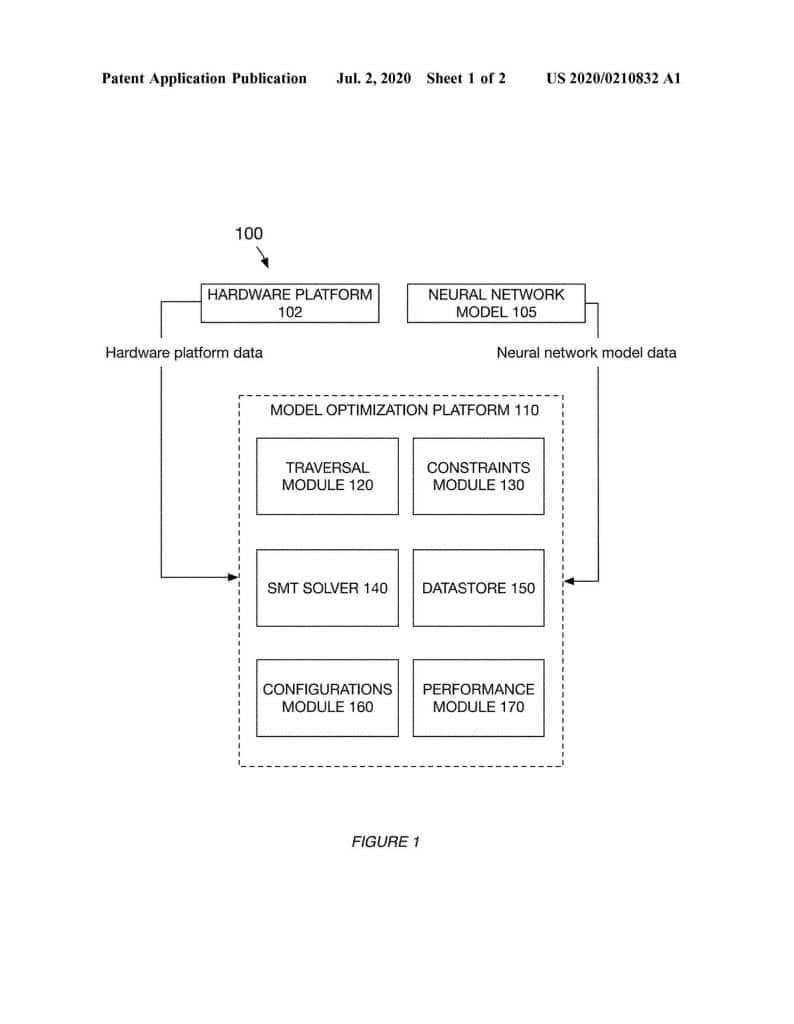Some of the most important aspects of its existing and future technologies is Tesla’s advances in the artificial intelligence arena, which involves applying neural networks to different hardware platforms. A recent patent publication entitled, “System and Method for Adapting a Neural Network Model On a Hardware Platform,” gives some insight into how the manufacturer of electric cars is taking on the challenge.
A neural network is typically a collection of algorithms designed to gather data and recognize patterns. The actual data to be collected depends on the device involved and what sort of information it may send to the network, i.e. cameras / image data, etc. Differences between platforms mean differences in the algorithms of the neural network, and to adapt them is a time consuming thing for developers. Just as for example apps need to be programmed to work on a phone or tablet based on the operating system or hardware, so do neural networks. Tesla’s solution to the question of adaptation is (of course) automation.
During the process of adapting a neural network to different hardware, a software developer must make decisions based on the choices available built into the hardware being used. In turn, each of these options typically requires research, hardware documentation review, and impact analysis, with each set of options selected, eventually adding up to a neural network configuration to be used. The implementation Tesla calls such choices, “decision points,” in which are a critical part of how their technology works.

According to the specification, after plugging into a neural network model and adaptation details unique to the hardware platform, software code traverses the network to learn where the decision points are, then runs the hardware parameters against those points to provide usable configurations. More precisely, the software approach considers the hardware constraints (such as computing resources and performance metrics) and creates configurations for the neural network that will fulfill the requirements for it to function properly.
From the application:
“In order to produce a concrete implementation of an abstract neural network, a number of implementation decisions about one or more of system’s data layout, numerical precision, algorithm selection, data padding, accelerator use, stride, and more may be made. These decisions may be made on a per-layer or per-tensor basis, so there can potentially be hundreds of decisions, or more, to make for a particular network. Embodiments of the invention take many factors into account before implementing the neural network because many configurations are not supported by underlying software or hardware platforms, and such configurations will result in an inoperable implementation.”

Tesla’s invention also provides the ability to display information about the neural network configuration on a graphical interface which makes evaluation and selection more user friendly. For example, various configurations may have different evaluation times, power consumption or memory usage. For this process, perhaps an analogy would be to select configurations based on differences between Track Mode and Range Mode but instead on how you would like your AI to work with your hardware.
This patent application appears to be one of Tesla’s reported DeepScale acquisition products, a Full Self Driving-focused AI startup designing neural networks for small devices. Dr. Michael Driscoll, the listed inventor, was a Senior Staff Engineer for DeepScale before moving to a position of Senior Software Engineer at Tesla. Before moving on to independent research this year, Dr. Forrest Iandola, DeepScale’s prior CEO, also transitioned to Tesla as a senior staff machine learning scientist.
Reported by Teslarati.
Want to buy a Tesla Model 3, Model Y, Model S, or Model X? Feel free to use my referral code to get some free Supercharging miles with your purchase: http://ts.la/guanyu3423
You can also get a $100 discount on Tesla Solar with that code. No pressure.





